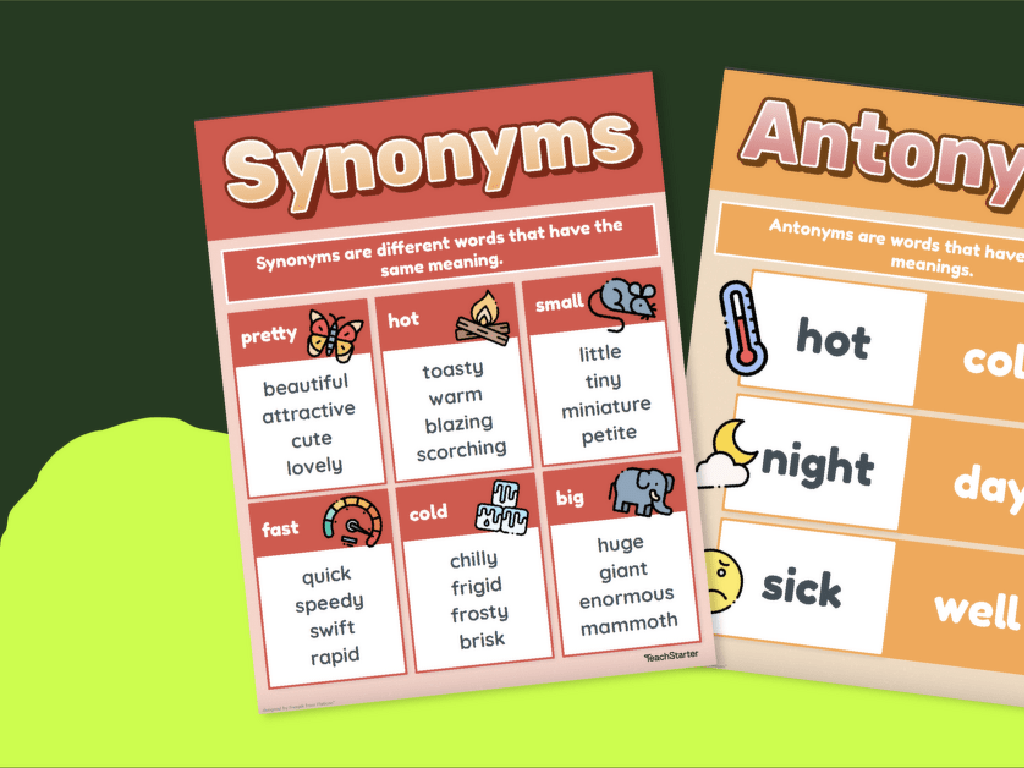Describe The Effects Of Gene Mutations On Organisms
Subject: Science
Grade: Seventh grade
Topic: Genes To Traits
Please LOG IN to download the presentation. Access is available to registered users only.
View More Content
The Impact of Gene Mutations
– What is a gene mutation?
A permanent alteration in the DNA sequence that makes up a gene.
– Types of gene mutations
Insertions, deletions, and substitutions are common types.
– Mutations’ effects on traits
Mutations can be beneficial, neutral, or harmful to organisms.
– Examples of gene mutations
Sickle cell anemia is caused by a mutation in the hemoglobin gene.
|
This slide introduces the concept of gene mutations and their effects on organisms. Start by defining a gene mutation as a change in the nucleotide sequence of a gene. Explain the different types of mutations, such as insertions, deletions, and substitutions, and how they can affect the gene’s function. Discuss how these changes can influence an organism’s traits, potentially leading to variations in physical appearance, behavior, or health. Use sickle cell anemia as an example of a mutation that affects red blood cells, leading to a specific disease condition. Encourage students to think about how mutations contribute to genetic diversity and evolution. The slide aims to provide a foundational understanding that mutations are not always negative but can have a range of impacts on living organisms.
Exploring Gene Mutations
– What is a gene mutation?
– A permanent alteration in the DNA sequence that makes up a gene.
– Types: Point & Chromosomal
– Point mutations affect single nucleotides. Chromosomal mutations involve large DNA segments.
– Spontaneous vs. Induced causes
– Spontaneous occur naturally. Induced are caused by environmental factors.
– Mutation effects on organisms
|
This slide introduces the concept of gene mutations and their impact on organisms. A gene mutation is a change in the DNA sequence that can lead to variations in gene expression and protein function. Students should understand the difference between point mutations, which are changes in a single nucleotide, and chromosomal mutations, which can affect large sections of DNA or whole chromosomes. Additionally, mutations can happen spontaneously or be induced by external factors like radiation or chemicals. It’s crucial to discuss how these mutations can lead to a range of effects on organisms, from no effect at all to significant changes in physical traits or health.
Point Mutations and Their Effects
– Point mutations: basics
– A change in a single nucleotide in DNA
– Types: substitution, insertion, deletion
– Substitution: one base is replaced; insertion: extra base added; deletion: base is removed
– Point mutation examples
– Sickle cell anemia: substitution; Cystic fibrosis: deletion
– Activity: Spot the mutation
– Given a DNA sequence, find and identify the type of mutation
|
This slide introduces students to point mutations and their types: substitution, insertion, and deletion. Point mutations are changes to individual nucleotides in the DNA sequence, which can have various effects on organisms. Substitution might not change the amino acid (silent mutation), or it could change the amino acid to another (missense mutation), or even create a stop signal (nonsense mutation). Insertions and deletions can cause frameshifts, altering the entire reading frame of the gene. Examples like sickle cell anemia and cystic fibrosis illustrate the real-world impact of these mutations. The class activity will help students apply their knowledge by identifying mutations in sample DNA sequences. Provide several sequences with different mutations for the students to analyze, and encourage group discussion to facilitate learning.
Chromosomal Mutations and Their Effects
– Types of chromosomal mutations
– Deletion, duplication, inversion, translocation
– Real-world mutation examples
– Down syndrome: extra chromosome 21, Cri-du-chat: deletion on chromosome 5
– Mutation impact on organisms
– Mutations can cause genetic disorders or physical/behavioral traits
– Discussion on mutation effects
|
This slide introduces students to the concept of chromosomal mutations, which are changes to the structure of chromosomes. Deletion removes a chromosome segment, duplication repeats a segment, inversion reverses a segment, and translocation moves a segment to a new location. Real-world examples include Down syndrome, caused by an extra chromosome 21, and Cri-du-chat syndrome, caused by a deletion on chromosome 5. These mutations can have various effects on an organism, ranging from no noticeable impact to significant physical or behavioral changes. Encourage students to think critically about how these mutations might affect an organism’s ability to survive and reproduce. The discussion should help them understand the role of mutations in evolution and genetic diversity.
Effects of Gene Mutations on Organisms
– Mutations: Not always harmful
– Some mutations can be beneficial or have no effect at all.
– Adaptive mutations: Evolution link
– Beneficial mutations may lead to new abilities, aiding survival and evolution.
– Neutral mutations: Genetic diversity
– Mutations without effect contribute to the variety in a species’ gene pool.
– Negative mutations: Possible harm
– Harmful mutations can cause diseases or impair functions in organisms.
|
This slide aims to explain that mutations, which are changes in the DNA sequence, can have different impacts on organisms. While the word ‘mutation’ often carries a negative connotation, it’s important to understand that not all mutations are detrimental. Some can be advantageous, providing the genetic variation necessary for evolution through natural selection. Others may have no observable effect but still contribute to the genetic diversity within a population, which can be crucial for its adaptability to changing environments. However, there are also mutations that can negatively affect an organism, potentially leading to genetic disorders or decreased chances of survival. Encourage students to think of examples, such as the mutation that causes sickle cell anemia but also provides resistance to malaria.
Mutations and Human Health
– Genetic disorders from mutations
– Changes in DNA can lead to conditions like cystic fibrosis or hemophilia.
– Mutations’ role in cancer
– Some mutations can cause cells to grow uncontrollably, leading to cancer.
– Case study: Sickle Cell Anemia
– Sickle Cell Anemia is a result of a mutation affecting hemoglobin.
– Impact on health and traits
|
This slide aims to explain the relationship between gene mutations and human health. Genetic mutations can lead to a variety of disorders, which may be inherited or occur spontaneously. Discuss examples like cystic fibrosis and hemophilia to illustrate how mutations can disrupt normal bodily functions. Highlight the role of mutations in the development of cancer, emphasizing that not all mutations lead to cancer, but some specific changes can cause cells to divide uncontrollably. Use Sickle Cell Anemia as a case study to show a specific example of how a single mutation in the DNA can lead to significant changes in an organism’s traits and health, such as altered red blood cell shape and compromised oxygen transport. Encourage students to think about the implications of these mutations and how they can affect an individual’s life.
Detecting and Researching Mutations
– Detecting genetic mutations
Scientists use tools like gene sequencing to find changes in DNA.
– Significance of genetic research
Research helps us understand how mutations affect health and development.
– Emerging tech in genetics
New technologies like CRISPR can edit genes, offering potential cures.
– Impact on understanding mutations
These advancements lead to better diagnosis and treatment of genetic disorders.
|
This slide aims to explain the processes and technologies involved in detecting and researching genetic mutations. Emphasize the role of gene sequencing in identifying mutations and the critical importance of ongoing genetic research in understanding the implications of these mutations on organism health and development. Highlight emerging technologies such as CRISPR, which allows for precise gene editing and has revolutionized the field of genetics. Discuss how these technologies contribute to our ability to diagnose and potentially treat genetic disorders, thereby improving the quality of life for affected individuals. Encourage students to think about the ethical considerations of genetic editing and its potential impact on future generations.
Class Activity: Mutation Simulation
– Create your own DNA sequence
– Simulate a mutation event
– Use scissors to ‘mutate’ your DNA sequence
– Observe the mutation’s effect
– How does the sequence change?
– Discuss mutation outcomes
– Are mutations always harmful, or can they be beneficial or neutral?
|
This activity is designed to help students understand the concept of genetic mutations and their potential effects on organisms. Provide each student with paper strips representing nucleotide sequences. Students will use scissors to simulate a mutation by cutting and rearranging the sequence. Afterward, they will tape the ‘mutated’ sequence together and compare it to the original. Discuss as a class how mutations occur randomly and can result in changes to an organism’s traits. Some mutations may be harmful, others beneficial, and many neutral. The objective is to grasp the unpredictable nature of mutations and their role in genetic diversity. Possible variations of the activity could include simulating different types of mutations, such as insertion, deletion, or substitution, and predicting the effects of these mutations on protein synthesis.
Reflecting on Gene Mutations
– Recap: Effects of mutations
– Mutations can be beneficial, harmful, or neutral.
– Q&A session
– Mutations and diversity
– Genetic diversity is crucial for species’ survival.
– Reflect on learning
– Think about how mutations impact evolution.
|
This slide aims to summarize the key points about gene mutations and their effects on organisms. Start by recapping the different types of mutations and their potential impacts on an organism’s traits. Open the floor for any questions the students may have, encouraging them to clarify their doubts. Highlight the importance of mutations in contributing to the genetic diversity of life, which is essential for the adaptability and evolution of species. Finally, prompt students to reflect on what they’ve learned about gene mutations and how this knowledge enhances their understanding of genetics and the complexity of life.






